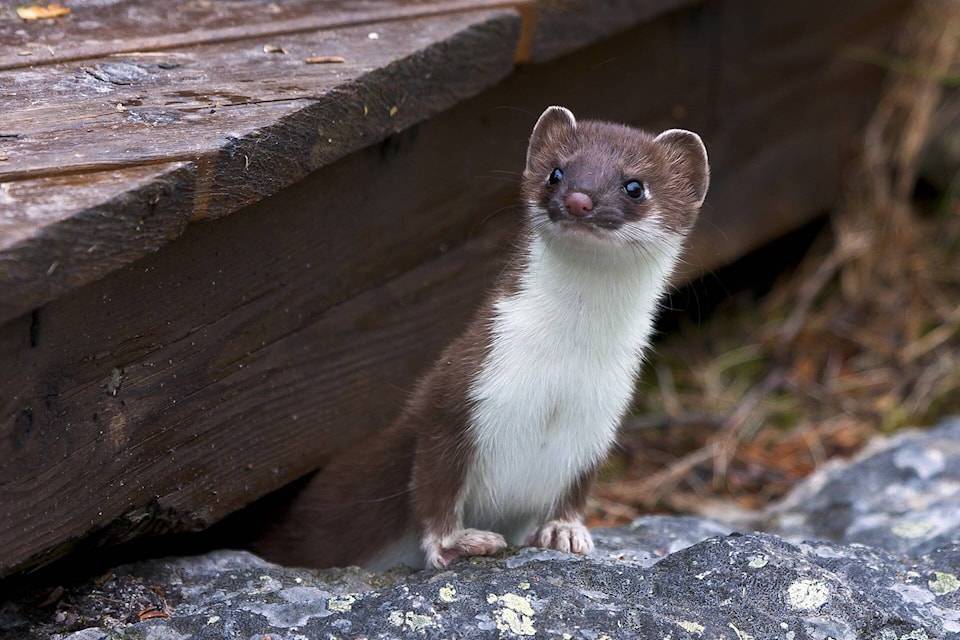By Ed McMackin, biologist by profession and naturalist by nature
Many years ago, as I remember, there was a little ditty with the words, “pop goes the weasel”. It went something like this, “All around the mulberry bush, the monkey chased the weasel. The monkey stopped to pull up a sock, pop goes the weasel.” I see that little nursery rhyme is still around… and so are weasels.
The behavior of a weasel is something like described in that children’s song. “Pop! Now you see, me now you don’t.” They are one of the quickest creatures around. One might be looking around and see a weasel suddenly stick its head up from behind a rock. When you blink, it’s gone. You blink again and wonder if what you thought you saw was actually a weasel or something else.
Many years ago, I read about Harold. The story was based on a man’s experiences while living in a remote wilderness cabin. He became part of the woods, and it wasn’t long until he made a number of forest acquaintances. Harold, a weasel, along with a couple of siblings, gained entrance into the woodsman’s inner circle. Through a long process, the young weasels became very trusting, circling around him and picking up tiny morsels.
One day, to the surprise and delight of the woodsman, Harold climbed right up the woodsman’s pant-leg and perched on his knee. There on his knee, Harold raised himself to his full stature and looking straight at the woodsman with that black, beady eye, pleaded for more treats. The woodsman thought this one has to have a name and so that’s where “Harold” came to be.
Some have said, to see a weasel, what you have to do is just sit down on a log and be as quiet and still as possible. And also make a squeaky sound, like that of a mouse. Top that up with a good deal patience.
One time in late spring, I was pulling up floor planks in an old shed. On lifting the first plank, I spotted a nest in the dry grass, containing six hairless, baby mice. Then, a weasel popped its head up above the floor planks and took a good look at me, then quickly disappeared. My thought was that the weasel was after the baby mice. I concluded those hairless, little creatures were too big to be mice and might be weasel babies. I went to the shed and carefully lifted the plank back up. The nest was empty. Like some other creatures, when their young are disturbed, they move somewhere else. It seems the weasel did just that.
Weasels, mink, pine martens, fishers, ferrets and wolverines are all related, and have a similar track pattern. The short-tailed weasels, sometimes called ermines, and long-tailed weasels have a white coat in winter.
All these wild creatures are very sensitive to movement and unusual sounds. So for the most part, they can be better observed when one sits motionless in one spot, or moves about very casually, avoiding staring directly at any animal. It reminds me of the advice of one person - “If you want to see a butterfly, sit down on a log and wait, and it will come and join you.”
READ MORE: Out There: Digging in for the Winter
